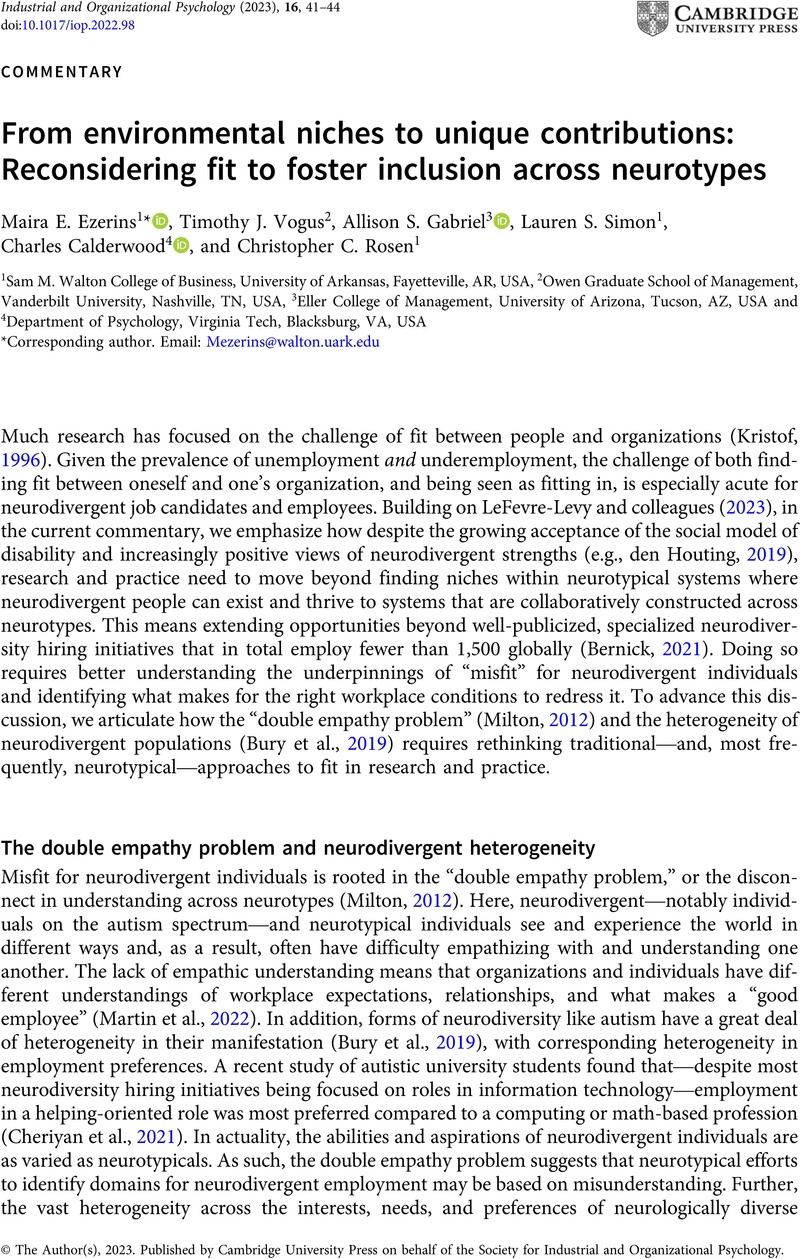Crossref Citations
This article has been cited by the following publications. This list is generated based on data provided by Crossref.
Comer, Debra R.
2024.
Neurodiversity and Work.
p.
107.
Ezerins, Maira E.
Simon, Lauren S.
Vogus, Timothy J.
Gabriel, Allison S.
Calderwood, Charles
and
Rosen, Christopher C.
2024.
Autism and Employment: A Review of the “New Frontier” of Diversity Research.
Journal of Management,
Vol. 50,
Issue. 3,
p.
1102.





